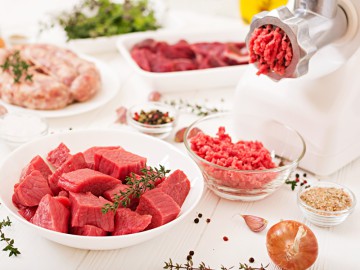SLAUGHTER AND MEAT INTEGRATED INDUSTRY
All over the world, meat and meat products are one of the main food sources for people. Depending on the growing population, increasing consumption and developing technology, production techniques have been developed, capacities have been increased and the meat industry sector has been transformed into integrated facilities. In parallel with these developments in the meat and meat products sector, negative effects on the environment have also increased.
Since water is used in almost every production step in the integrated meat industry, water is an important input in this sector. In this case, each process creates a wastewater source. For this reason, slaughterhouse and meat integrated wastewater must be treated before being discharged to receiving environments such as sewers, rivers and lakes.
Wastewaters originating from the integrated meat industry generally contain high levels of Biological Oxygen Demand (BOD), Chemical Oxygen Demand (COD), Suspended Solids (AKM), oil and grease parameters. Wastewaters contain blood, manure, hair, oil, feathers and bones, and contain pathogenic microorganisms with high temperatures. The waste water of slaughterhouses and meat integrated facilities is red-brown in color, smelly, prone to foaming and rotting.
The wastewater of slaughterhouses and integrated meat facilities is generally treated with consecutive physical (grids and sieves), chemical (chemically added DAF) and biological treatment (aerobic, anaerobic, anoxic) systems.

